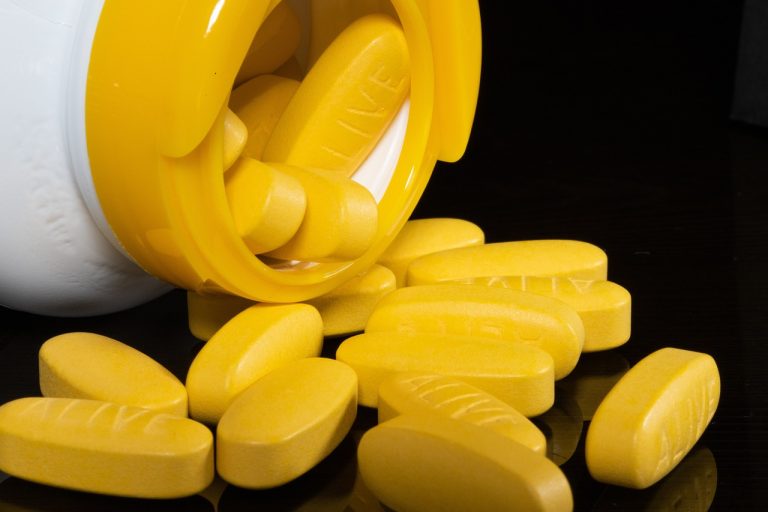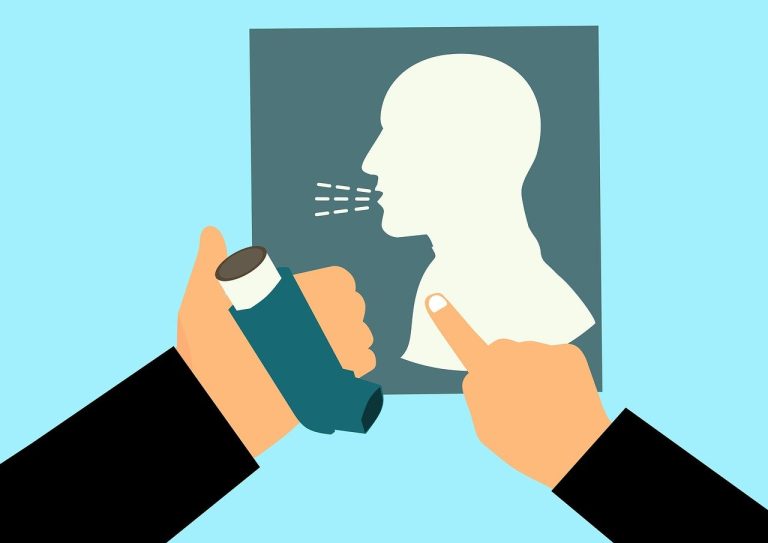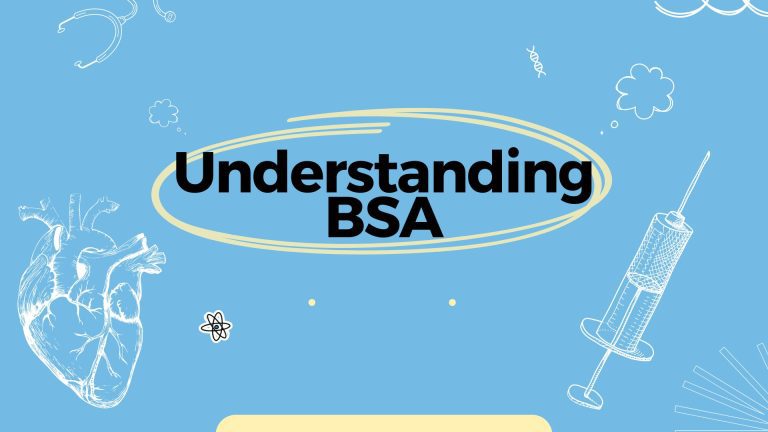Book Appointment Now

Pharmacokinetics and Pharmacodynamics Explained
Pharmacokinetics (PK) and pharmacodynamics (PD) are fundamental concepts in pharmacology and are crucial for anyone pursuing a career as a pharmacy technician. These concepts help us understand how drugs work within the body and play a significant role in ensuring safe and effective patient care.
A solid grasp of PK and PD is essential for those preparing for the Pharmacy Technician Certification Exam (PTCE).
Pharmacokinetics, often described as what the body does to the drug, encompasses the processes of absorption, distribution, metabolism, and excretion. Understanding these processes helps predict a drug’s effect’s onset, intensity, and duration.
For instance, knowing how a drug is absorbed can influence decisions about dosage forms and administration routes, which is critical information for a pharmacy technician.
On the other hand, pharmacodynamics refers to what drugs do to the body. It involves the study of drugs’ biochemical and physiological effects and mechanisms of action.
This includes how drugs interact with receptors in the body, the relationship between drug concentration and effect, and the therapeutic and toxic effects of drugs.
Mastery of pharmacodynamics is key to understanding how to achieve desired therapeutic outcomes while minimizing adverse effects.
What is Pharmacokinetics?
Definition of Pharmacokinetics
Pharmacokinetics (PK) is the branch of pharmacology dedicated to understanding drug movement within the body. It encompasses the processes of absorption, distribution, metabolism, and excretion (often abbreviated as ADME).
Pharmacokinetics helps determine the onset, intensity, and duration of a drug’s effect, which are critical for designing appropriate dosing regimens. For pharmacy technicians, mastering PK is essential to ensure the safe and effective use of medications in patient care.
Four Key Processes of Pharmacokinetics
- Absorption
- Definition and Significance: Absorption is the process by which a drug enters the bloodstream from its site of administration. It is a crucial determinant of a drug’s bioavailability, which refers to the proportion of the drug that reaches the systemic circulation and is available to exert its effects.
- Factors Affecting Drug Absorption: Various factors influence drug absorption, including the route of administration (oral, intravenous, intramuscular, etc.), the drug’s solubility, the pH of the environment, and the presence of food or other substances.
Examples:
– Oral drugs must pass through the gastrointestinal tract and may be affected by factors such as gastric emptying time and intestinal motility.
– Alendronate (Fosamax), a drug used to treat osteoporosis, has very low oral bioavailability (less than 1%) due to poor intestinal absorption. It must be taken on an empty stomach with plain water to maximize absorption.
– Cyclosporine, an immunosuppressant drug used in organ transplants, is lipophilic and has poor and variable oral absorption. Its absorption is improved when taken with food.
- Distribution
- Definition and Importance: Distribution refers to the dispersion of a drug throughout the body’s fluids and tissues. The extent and rate of distribution affect the drug’s therapeutic effectiveness and potential side effects.
- Factors Influencing Distribution: Several factors impact distribution, including blood flow to tissues, the drug’s affinity for tissue binding sites, plasma protein binding, and the permeability of cell membranes.
- Volume of Distribution Concept: The volume of distribution (Vd) is a theoretical volume that a drug would occupy if it were uniformly distributed throughout the body at the same concentration as in the plasma. A large Vd indicates extensive distribution into tissues.
- Examples:
– Amiodarone, an antiarrhythmic drug, has an extremely large volume of distribution (around 66 L/kg) due to its high lipophilicity and extensive tissue binding, particularly in fat and muscle tissues.
– Lithium, used to treat bipolar disorder, has a small volume of distribution (around 0.7 L/kg) as it is primarily distributed in the extracellular fluid and does not bind significantly to plasma proteins.
- Metabolism
- Definition and Role: Metabolism, or biotransformation, is the process by which the body chemically alters drugs, typically in the liver, to facilitate their excretion. Metabolism often transforms lipophilic drugs into more hydrophilic compounds.
- Phases of Drug Metabolism:
- Phase I: Involves oxidation, reduction, and hydrolysis reactions often mediated by cytochrome P450 enzymes.
- Phase II: Involves conjugation reactions, where drugs are combined with another substance to increase their water solubility.
- Enzymes Involved: Cytochrome P450 enzymes play a significant role in Phase I reactions, affecting the metabolism of many drugs.
- Examples:
– Drugs such as statins and warfarin undergo extensive metabolism in the liver.
– Codeine is a prodrug that requires metabolism by the CYP2D6 enzyme to form the active metabolite, morphine, responsible for its analgesic effects. Individuals who are poor metabolizers of CYP2D6 may not experience adequate pain relief from codeine.
– Warfarin, an anticoagulant, is primarily metabolized by the CYP2C9 enzyme. Genetic variations in CYP2C9 can lead to significant differences in warfarin metabolism and dosing requirements.
- Examples:
- Excretion
- Definition and Primary Routes: Excretion is the process of removing drugs from the body, primarily through the kidneys (renal excretion) but also via bile, sweat, saliva, and other routes.
- Factors Affecting Drug Excretion: Factors such as renal function, urine pH, and drug properties influence excretion. The half-life of a drug, which is the time it takes for the plasma concentration to reduce by half, is a key concept in understanding drug excretion.
- Examples:
– Aminoglycosides, such as gentamicin, are primarily eliminated through glomerular filtration in the kidneys. Patients with renal impairment may require dose adjustments to prevent accumulation and toxicity.
– Digoxin, a cardiac glycoside, has a narrow therapeutic index and is primarily excreted unchanged by the kidneys. Its dosage must be carefully adjusted based on renal function.
Understanding the four key processes of pharmacokinetics—absorption, distribution, metabolism, and excretion—is crucial for pharmacy technicians. This knowledge not only helps them understand how drugs work but also ensures their safe and effective use in clinical practice.
What is Pharmacodynamics?
Definition of Pharmacodynamics
Pharmacodynamics (PD) is the branch of pharmacology that deals with drugs’ effects on the body. It examines how drugs interact with biological systems to produce a therapeutic effect.
Understanding PD is essential for determining the appropriate drug, dose, and treatment plan to achieve the desired therapeutic outcomes.
Mechanism of Action
- How Drugs Interact with Receptors: Drugs exert their effects by binding to specific receptors in the body. When activated or inhibited by a drug, these receptors can be proteins, enzymes, or nucleic acids that trigger a series of biochemical events.
- Types of Drug-Receptor Interactions:
- Agonists: Drugs that bind to receptors and mimic the body’s natural substances, activating the receptor to produce a response.
- Antagonists: Drugs that bind to receptors but do not activate them. Instead, they block the receptor and prevent other substances from triggering a response.
- Examples of Common Drug Mechanisms: For instance, beta-blockers are antagonists that block adrenaline receptors to reduce blood pressure, while opioids are agonists that activate pain-relief receptors in the brain.
Dose-Response Relationships
- Explanation of Dose-Response Curves: The dose-response curve illustrates the relationship between the drug dose and its pharmacological effect. It helps to determine the minimum effective dose and the maximum tolerated dose.
- Concepts of Efficacy and Potency:
- Efficacy: The maximum effect a drug can produce, regardless of dose.
- Potency: The amount of drug needed to produce a specific effect.
- Therapeutic Index and Its Significance: The therapeutic index (TI) is the ratio of a drug’s toxic dose to its therapeutic dose. A high TI indicates a safer drug.
Drug-Receptor Interactions
- Types of Receptors: There are various receptors, including G-protein coupled receptors, ion channels, and nuclear receptors. Each type mediates different physiological responses.
- Signal Transduction Pathways: Once a drug binds to a receptor, it initiates a cascade of intracellular events leading to its effects. Understanding these pathways is crucial for predicting drug responses and interactions.
- Examples of Drugs Acting on Specific Receptors: Antihistamines block histamine receptors to reduce allergy symptoms, and antidepressants may target serotonin receptors to improve mood.
Antihypertensives:
- Angiotensin-Converting Enzyme (ACE) Inhibitors like lisinopril are competitive inhibitors of the ACE enzyme, preventing the formation of angiotensin II and thereby reducing blood pressure.
- Beta-blockers like metoprolol are antagonists that bind to and block beta-adrenergic receptors, decreasing cardiac output and blood pressure.
Antidepressants:
- Selective Serotonin Reuptake Inhibitors (SSRIs) like fluoxetine inhibit serotonin reuptake in the brain, increasing its availability and improving mood.
- Tricyclic antidepressants like amitriptyline block the reuptake of norepinephrine and serotonin but also interact with other receptors like histamine and muscarinic receptors, contributing to their side effects.
Antibiotics:
- Penicillins like amoxicillin inhibit bacterial cell wall synthesis by binding to and inactivating penicillin-binding proteins (PBPs) involved in peptidoglycan synthesis.
- Fluoroquinolones like ciprofloxacin inhibit bacterial DNA synthesis by inhibiting the enzymes DNA gyrase and topoisomerase IV, which are essential for DNA replication and transcription.
Clinical Applications and Relevance to PTCE
Why PK and PD Matter in Clinical Practice
Understanding the principles of pharmacokinetics (PK) and pharmacodynamics (PD) is not just academic; it has significant real-world applications in clinical practice. These principles help ensure that medications are used safely and effectively, optimizing patient therapeutic outcomes.
- Real-World Applications of PK and PD Principles in Patient Care:
- Dosing Regimens: PK principles guide the design of dosing regimens. For instance, knowing a drug’s half-life helps determine how frequently it should be administered to maintain therapeutic levels without causing toxicity. For example, antibiotics with short half-lives may need to be taken multiple times a day to maintain effective blood concentrations.
- Route of Administration: PK studies help determine the most appropriate drug administration route. For instance, some drugs are poorly absorbed orally and must be administered intravenously to achieve the desired effect.
- Therapeutic Drug Monitoring: PK principles are essential in therapeutic drug monitoring (TDM), which involves measuring drug concentrations in the blood at designated intervals to maintain a constant therapeutic level and avoid toxicity. This is crucial for drugs with narrow therapeutic indices, like digoxin and phenytoin.
- Examples of How PK and PD Knowledge Can Prevent Adverse Drug Reactions:
- Drug Interactions: Understanding PK and PD can help predict and manage drug interactions. For example, certain drugs can inhibit or induce the cytochrome P450 enzymes, altering the metabolism of other drugs and potentially leading to adverse effects. For instance, the antibiotic erythromycin inhibits CYP3A4, which can increase the levels of drugs like statins, leading to toxicity.
- Individualized Therapy: PK and PD principles support personalized medicine by accounting for individual patient variables such as age, weight, kidney function, and genetic factors. For example, genetic polymorphisms in metabolizing enzymes can significantly affect drug response and toxicity. Tailoring therapy based on these factors can improve efficacy and reduce adverse effects.
- Managing Side Effects: Knowledge of PD helps anticipate and manage side effects. For instance, understanding that opioids can cause respiratory depression informs the monitoring and management strategies for patients receiving these medications.
Special Populations and Dosage Adjustments
While pharmacokinetic and pharmacodynamic principles provide a general understanding of how drugs work in the body, it is essential to consider variations in these processes among special populations.
Factors such as age, pregnancy, and organ impairment can significantly impact drug absorption, distribution, metabolism, and excretion, potentially leading to altered therapeutic effects or increased risk of adverse reactions. Dosage adjustments and careful monitoring may be necessary in these populations.
Pediatrics
Children, especially neonates and infants, have unique pharmacokinetic and pharmacodynamic profiles compared to adults. Their immature organ systems, including the liver and kidneys, can affect drug metabolism and excretion.
Additionally, the distribution of drugs in the body can differ due to variations in body water and fat composition. These factors may necessitate dosage adjustments to ensure optimal therapeutic effects and minimize toxicity.
Example: Gentamicin, an aminoglycoside antibiotic, is primarily excreted by the kidneys. In neonates with immature renal function, dosage adjustments and extended dosing intervals may be required to prevent accumulation and potential nephrotoxicity.
Geriatrics
As individuals age, physiological changes can impact pharmacokinetic and pharmacodynamic processes. Decreased renal function, reduced hepatic metabolism, and altered body composition can affect drug absorption, distribution, and clearance.
Additionally, age-related changes in receptor sensitivity may influence a drug’s pharmacodynamic effects.
Example: Diazepam, a benzodiazepine used for anxiety and insomnia, is metabolized by the liver and has a longer half-life in elderly patients due to decreased hepatic function. Reduced dosages may be required to prevent excessive sedation and potential falls.
Pregnancy
During pregnancy, physiological changes can alter the pharmacokinetics of drugs, including increased plasma volume, decreased protein binding, and altered hepatic metabolism. Additionally, the placental barrier can limit the transfer of certain drugs to the fetus, affecting their efficacy.
Careful consideration of potential fetal risks and benefits is essential when prescribing medications during pregnancy.
Example: Lithium, used to treat bipolar disorder, is known to cross the placenta and may pose risks to the fetus. Close monitoring of lithium levels and potential dosage adjustments may be necessary during pregnancy.
Organ Impairment
Patients with liver or kidney disease may experience altered drug pharmacokinetics due to impaired metabolism or excretion, respectively.
In these cases, dosage adjustments or alternative therapies may be required to maintain therapeutic efficacy while minimizing the risk of adverse effects or toxicity.
Example: Metformin, an oral antidiabetic agent, is primarily excreted unchanged by the kidneys. In patients with renal impairment, metformin dosages should be reduced or the drug may need to be avoided to prevent lactic acidosis, a potential side effect.
Therapeutic Drug Monitoring (TDM)
In special populations, where pharmacokinetic and pharmacodynamic processes may be altered, therapeutic drug monitoring (TDM) can be a valuable tool. TDM involves measuring drug concentrations in the blood or other biological fluids to ensure that the levels remain within the therapeutic range.
This approach can aid in optimizing dosages, maximizing efficacy, and minimizing adverse effects, especially for drugs with narrow therapeutic indices or those with significant inter-individual variability in pharmacokinetics.
Sample PTCE Questions Related to PK and PD
To help solidify your understanding of PK and PD concepts, here are some sample PTCE questions. These questions are designed to reflect the type of content you may encounter on the exam.
- Question: A patient is prescribed a medication that is known to be a strong inhibitor of the cytochrome P450 3A4 enzyme. Which of the following effects is most likely to occur if the patient also takes a drug CYP3A4 metabolizes?
- A) The drug metabolized by CYP3A4 will have decreased effectiveness.B) The drug metabolized by CYP3A4 will have increased plasma concentrations.C) The drug metabolized by CYP3A4 will be excreted more rapidly.D) There will be no significant effect on the drug metabolized by CYP3A4.
- Question: Which of the following best describes the concept of drug half-life?
- A) The time it takes for the drug to reach its peak concentration in the bloodstream.B) The time it takes for half of the drug to be eliminated from the body.C) The duration of time the drug remains effective in the body.D) The time it takes for the drug to be distributed to the tissues.
Explanation: The half-life of a drug is the period required for the concentration of the drug in the plasma to decrease by half, which is crucial for determining dosing intervals . - Question: A patient is experiencing severe pain and is prescribed an opioid agonist. What is the primary mechanism of action for this type of medication?
- A) It blocks pain signals at the peripheral nerve endings.B) It inhibits the release of substance P.C) It activates opioid receptors in the central nervous system.D) It reduces inflammation at the site of injury.
Explanation: Opioid agonists work by binding to and activating opioid receptors in the brain and spinal cord, leading to pain relief.
You can learn more by practicing with our free PTCB practice test.
These questions illustrate the type of critical thinking and application of PK and PD principles necessary for the PTCE. Understanding these concepts will help you pass the exam and excel as a pharmacy technician.
Summary and Key Takeaways
We have explored the fundamental principles of pharmacokinetics (PK) and pharmacodynamics (PD) and their critical importance in the field of pharmacy. Understanding these concepts is essential for anyone preparing for the Pharmacy Technician Certification Exam (PTCE). Let’s recap the main points discussed:
- Pharmacokinetics (PK):
- Absorption: The process by which drugs enter the bloodstream from the site of administration. Factors such as the route of administration, drug solubility, and pH influence absorption.
- Distribution: The dispersion of drugs throughout the body’s fluids and tissues. Blood flow, tissue permeability, and plasma protein binding affect distribution.
- Metabolism: The chemical alteration of drugs by the body, primarily in the liver, involving Phase I (oxidation, reduction, hydrolysis) and Phase II (conjugation) reactions.
- Excretion: The removal of drugs from the body, mainly through the kidneys. The half-life of a drug is a crucial concept in understanding excretion and determining dosing intervals.
- Pharmacodynamics (PD):
- Mechanism of Action: How drugs interact with receptors to produce their effects. This includes agonists (activating receptors) and antagonists (blocking receptors).
- Dose-Response Relationships: The relationship between drug dose and its effect, including concepts of efficacy (maximum effect) and potency (amount needed for effect).
- Drug-Receptor Interactions: Types of receptors and signal transduction pathways that mediate drug effects, such as G-protein coupled receptors and ion channels.
Emphasis on the Importance of Mastering PK and PD for the PTCE
Mastering pharmacokinetics and pharmacodynamics is not only essential for passing the PTCE but also for becoming a competent and effective pharmacy technician. A thorough understanding of these concepts enables you to:
- Optimize Drug Therapy: By understanding how drugs are absorbed, distributed, metabolized, and excreted, you can help design effective dosing regimens and choose the appropriate route of administration.
- Prevent Adverse Drug Reactions: Knowledge of PK and PD helps predict and manage potential drug interactions and side effects, ensuring patient safety.
- Enhance Patient Care: Applying these principles in clinical practice allows you to provide personalized medicine, tailored to individual patient needs and conditions.
Encouragement to Integrate These Concepts into Regular Study Routines
To ensure success in the PTCE and your future career, it is crucial to integrate the study of PK and PD into your regular study routines. Here are some tips:
- Regular Review: Periodically review key concepts and mechanisms. Use flashcards, diagrams, and summaries to reinforce learning.
- Practice Questions: Consistently practice with sample PTCE questions related to PK and PD. This helps in understanding the application of these concepts in exam scenarios.
- Case Studies: Study real-life case studies to see how PK and PD principles are applied in clinical settings. This will enhance your problem-solving skills and practical knowledge.
- Discussion Groups: Join study groups or online forums where you can discuss and clarify doubts with peers. Teaching others is also a great way to reinforce your own understanding.
By incorporating these strategies, you can build a solid foundation in pharmacokinetics and pharmacodynamics, paving the way for success in the PTCE and beyond.

Founder of the PTCBFreePracticeTest.com.



